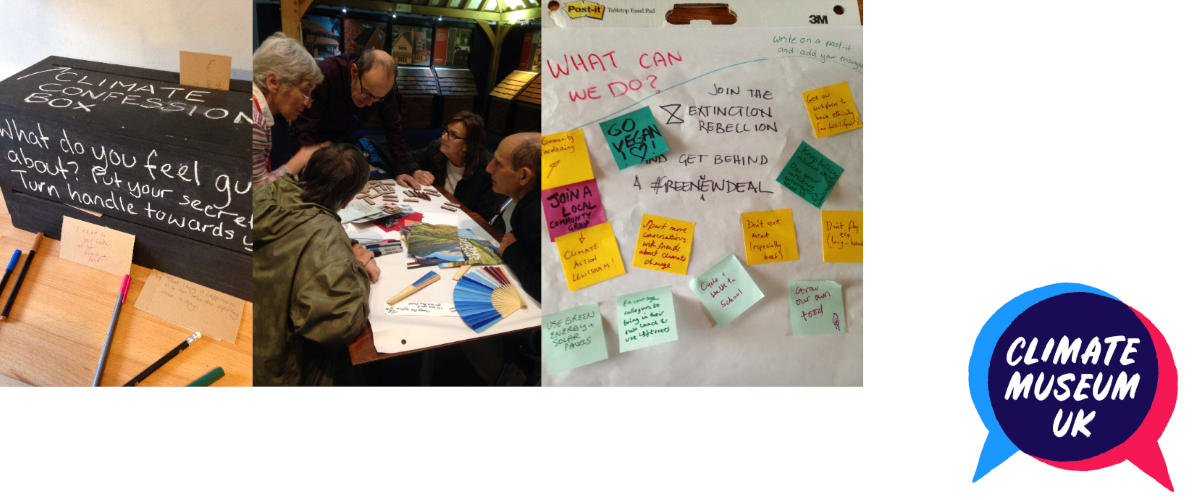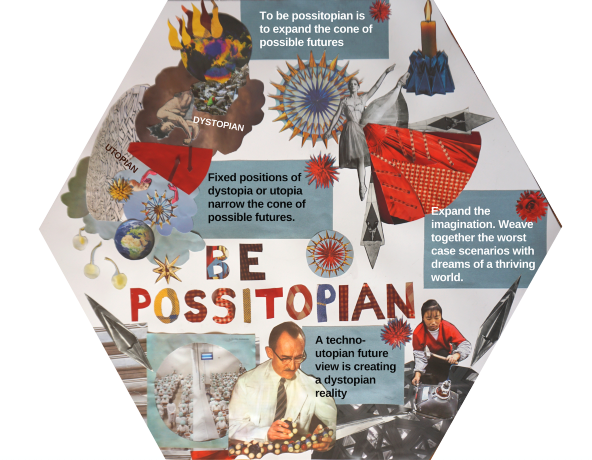“We exist to stir and collect creative responses to the emergency.”
The mobile and digital Climate Museum UK.
Bridget McKenzie in conversation with Elke Zobl and Timna Pachner
Bridget McKenzie is the initiator of the Climate Museum UK. After working in museums and not being able to address the global climate crisis properly there, she felt the urge to create a very particular museum in order to “stir and collect creative responses to the emergency”. In the following interview she talks about initiating Climate Museum UK, the formats, materials and methods they are implementing there, and why the Climate Museum UK is more than a museum after all.
Could you please tell us briefly what the Climate Museum UK is about?
It is a mobile and digital museum that is all about encouraging conversation about the climate and ecological emergency. It is called Climate Museum UK, but each of those words, climate, museum and UK, must be expanded. It concerns not just the climate but the wider earth crisis, and it is not just a museum. It uses the idea of a museum, because we use objects and we are collecting as well. We are collecting people’s responses to the planetary emergency. But it is a museum in a very loose sense. And also, the word UK has to be seen in a broader way. We have “UK” at the end of our name because the Climate Museum in New York got there first. Hence, we agreed to set up a museum adding UK at the end to make sure that our brand is distinct from theirs. But we take a global outlook, and we are really keen on working with people and organizations beyond the UK in a very distributed way.
We exist to stir and collect creative responses to the emergency. We developed the idea of “stirring” because people will often be stuck in fairly comfortable and fixed positions. If we put people together in rooms with things, processes, games, activities and stimuli, it encourages a bigger and expanded response. So, that is the stirring. We also want to stir an emotional response to how people process the unconscious or conscious trauma of living through extremely uncertain times and increasing material distress. We are collecting whatever it is that people are expressing, but we are also collecting protest, ephemera, artist books and publications.
So you have a lot of materials. Do you have the premises to store them, like what classical museums have?
We do not have lots of space. I do have a studio where the collection is kept. The studio is very small right now, but it might need to grow. Currently, we have a library of 150 books, but people keep publishing books about the emergency. Also, more and more children’s books are being published. So, when we pop up with our collections and activities, we take our library.
A lot of our activities are about encouraging verbal and visual expression. My background is mainly in working in the intersection between verbal and visual literacy. I like doing activities like collages, book making or helping people to create tools for communication.
We also do storytelling. We have a storytelling coach that is designed in a way that reminds of climate stripes. The warming stripes. It is quite verbal and visual. We also have lots of activities that involve sorting. We have lots of activities with cards with different impulses on them. For example, a project that I am working on right now has to do with words about the environment. I am creating so-called “word-leaves”. These look like autumn leaves and there are words on them that all relate to the environment. For example, “holistic”, “sustainability” or “eco-anxiety”. There are lots of activities you can do with these leaves: You can make systemic patterns, encouraging people to organize them into links and branches. “Which word is the root?” “Which is your tree of favorite words?” “Which words are familiar?” “Which is your strange, exotic tree of words that you never heard of before?” “What words would you add to the tree?” That is an example for a typical activity that I would do.
Bridget McKenzie,
Elke Zobl,
Timna Pachner
(
2021):
“We exist to stir and collect creative responses to the emergency.”.
The mobile and digital Climate Museum UK.
Bridget McKenzie in conversation with Elke Zobl and Timna Pachner. In: p/art/icipate – Kultur aktiv gestalten
#
12 ,
https://www.p-art-icipate.net/we-exist-to-stir-and-collect-creative-responses-to-the-emergency/



 Artikel drucken
Artikel drucken Literaturverzeichnis
Literaturverzeichnis